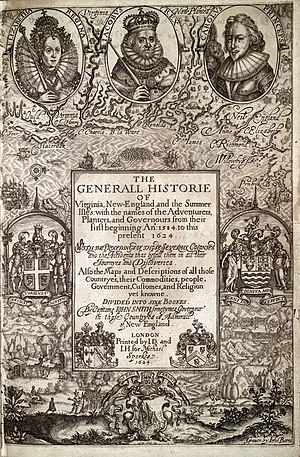
While Bermuda was originally discovered by Spanish navigator Juan Bermudez around 1511, the island went untended and unclaimed for nearly a century. The beginnings of English settlement were established almost by accident when a shipwreck left the flagship of English Admiral Sir George Somers shattered on Bermuda’s reefs in 1609.
Somers’ expedition had set out with the intention of colonizing the New World for Britain. He saw the New World as a potential fresh start for many citizens of Britain’s overcrowded cities. He had engineered the initiative, and the voyage had gone smoothly for the first few days.
The crew of the Sea Venture was en route to Jamestown, Virginia when they met their misfortune of the coast of Bermuda. On July 25, 1609, the ship was caught in a hurricane and tossed hundreds of miles off course, until she wrecked on the reefs of Bermuda’s Discovery Bay.
Fortunately, no lives were lost, and Somers took the opportunity to explore and map the islands. The men built makeshift boats and spent months charting the mainland and its surrounding islands.
Eventually, the crew of 150 survivors was able to build a couple of ships, and in these Bermuda-built ships, the survivors carried on with their voyage to the Jamestown colony. Three sailors were so enchanted by the island, however, that they volunteered to be left behind. These three British sailors became the first European settlers on Bermuda.
Intentional settlement began a few years later, when Bermuda was incorporated into the Virginia Company charter. In 1612, around 60 colonists arrived from England, and they soon established St. George Town as the first official settlement. St. George’s became Bermuda’s first capital, and remains today as the oldest continually inhabited English town in the Americas.

In 1615, Bermuda was handed over to the Somers Isles Company. Shortly thereafter, Bermuda officially gained status as a British colony, when the first parliament convened in 1620. In 1684, King Charles II appointed Sir Robert Robertson as the colony’s first governor and designated Bermuda as British Crown Colony.
Colonization continued throughout the 17th and 18th centuries, bolstered in part by the slave trade. Most slaves were brought in from Africa, though quite a number of Scots were sent for their part in fighting against Cromwell, and many more Irish slaves followed in 1651. Fortunately, all slaves on Bermuda were freed under the British Emancipation Act of 1834.
Bermuda gained particular prominence during the American Revolution. Since Britain lost its colonial ports, strong naval bases were established in Bermuda. The island also went on to play a key role during WWII as a base for refueling and a hotbed of espionage.
As the island gained prominence over the years, its relationship with England gradually shifted. After nearly two hundred years of occupation, the British government decided to grant the colony self-government. In 1957, Britain withdrew its armies.
Bermuda has long held status as Britain’s oldest colony. Today, Bermuda is not officially a country, and while it is self-governing, it forms part of the Commonwealth. As such, the island’s Governor is appointed by the Crown and Britain directly manages internal security and police systems. As a British Overseas Territory, Bermuda is represented by Britain in all foreign affairs.



